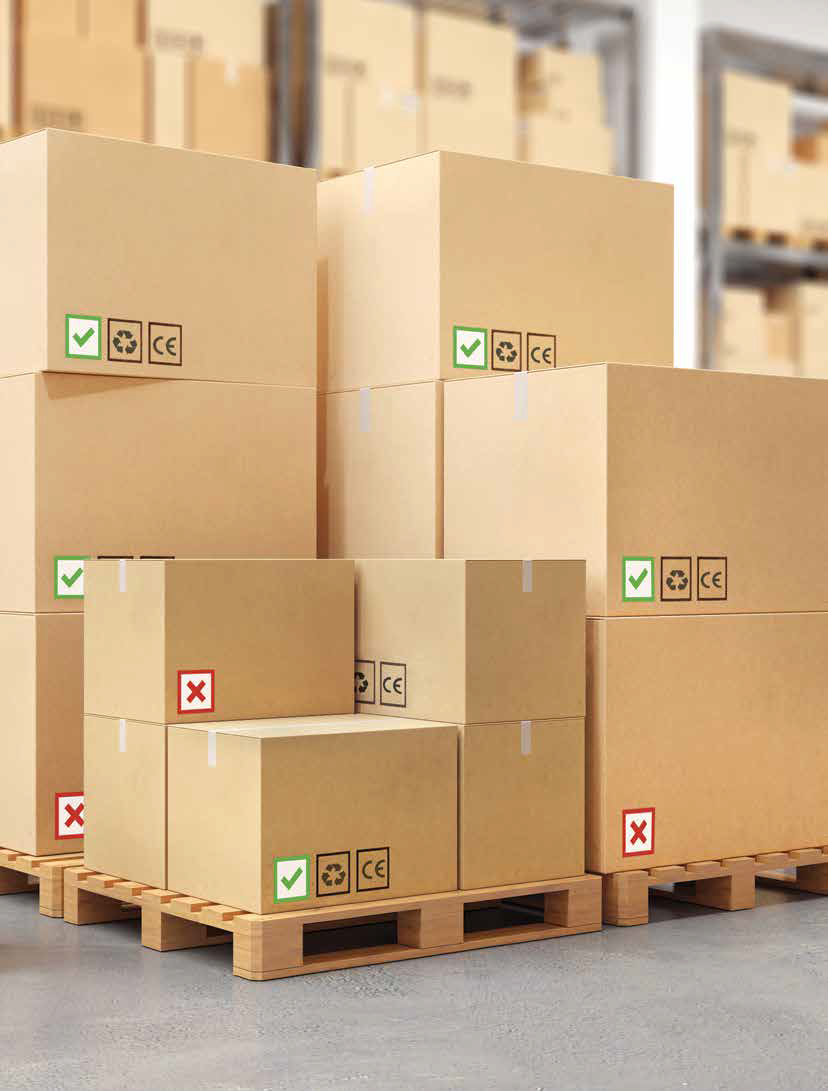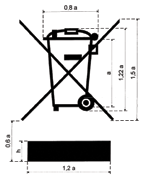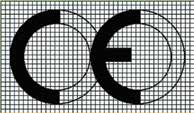
CHEAT SHEET
- Recognize and adapt. Environmental compliance obligations are initiated when a finished product is commercially used, consumed, or distributed inside the European Union.
- Understanding the guide. The EU Commission created the Blue Guide to outline product regulations for the manufacturer, the importer, and the distributer in the EU market.
- Know your role. The European Court of Justice (ECJ) ruled on September 10, 2015, that a manufacturer is responsible for ensuring that each component of a product meets EU regulations.
- Circle of life. The EU Commission revised its circular economy package to “close the loop” of a product’s lifecycle by increasing the emphasis on recycling and reuse.
All businesses, regardless of their global location, have to comply with EU environmental directives and regulations when selling finished products in the European Union. The environmental product stewardship laws place a varying degree of regulatory burden and compliance risk on economic operators in the supply chain. Businesses need to clearly understand their sometimes multiple and/or changing roles in the supply chain, and consider the steps they should take to mitigate legal risk. At the same time, businesses need to have an eye on new developments and trends in the future direction of these laws.
This article highlights some of the key issues and developments arising in respect of EU environmental product laws, such as RoHS2, Ecodesign, Energy Labelling, and REACH. Perhaps unusually, this article does not discuss the environmental content of these laws. It does, however, discuss the very practical aspects of when and how these laws will impact the supply chain.
When do EU environmental laws apply to your products?
For many EU environmental product laws, the compliance obligations for economic operators are triggered when a finished product is first made available on the EU market, known as “placing on the market.” Only a manufacturer or importer can place on the market, and they do so when they supply a product to a distributor or end user for the first time. For example, any subsequent supplies where the finished product is supplied from one distributor to another or from one distributor to an end user is known simply as “making available.”
Generally, “making available” requires an offer or an agreement between two or more legal entities for the transfer of ownership or the possession of the product. However, there is a further stipulation that the product has to have completed the manufacturing process, notwithstanding any offer or agreement that has been reached, in order for it to have been placed on the market. When a finished product is in the stock of the manufacturer or importer but is not yet made available (i.e., not being supplied for distribution, consumption, or use), then it cannot be said to have been placed on the market.
A product is “made available” when it is supplied for distribution, consumption, or use during the course of a commercial activity, whether in return for payment or free of charge. It also refers to each product individually, not including a type or version of the original. Making available on the market is an important concept as all economic operators in the supply chain have traceability requirements and a legal obligation to ensure that the only compliant products are sold to end users.
The concepts described above apply to CE-marking directives, such as RoH2, as well as ecodesign and energy labelling. Detailed guidance can be found in the EU Commission’s “Blue Guide” on the implementation of EU product rules (updated April 2016), which is the most authoritative EU guidance on the application of product-related directives and regulations to goods destined for the EU market. However, the Blue Guide does not apply to REACH and, confusingly for businesses, ‘placing on the market’ as the trigger for compliance obligations has a slightly different meaning under that regime. For the purposes of REACH, “placing on the market” occurs on import (an onward supply by the importer is not required) and each subsequent supply is also a “placing on the market.”
Increasingly, EU law also applies to used and second-hand products imported from a third country, unless a specific exemption applies. This can include the older Waste Electrical and Electric Equipment Directive (WEEE), which stands as a manufactured applicable legislation that has come into force and which requires products to be subjected to further manufacturing processes before being sold on the EU market for the first time.
National authorities who have responsibility for EU border controls have the power to carry out checks on the characteristics of products arriving from outside of the European Union, even if they can be said to have been placed on the market. If they do not conform with EU legislation, these authorities have the ability to suspend their release.
The concepts of placing on the market and making available are important as the triggers for the compliance obligations of economic operators. However, these concepts become even more critical for timing purposes when EU environmental product laws are changing. When a change in law is on the horizon, an understanding of your new route to market is needed when negotiating contracts for product manufacturing and delivery. The product in question must comply with the legal requirements that are in place at the time that the product is placed on the market. If not, your business could be left holding (or facing the return of) products that are not legally compliant and cannot be supplied.
Demonstrating that products have left the stocks of a manufacturer or importer and have entered the distribution phase (e.g., via a relevant supply) is not always easy. A practical way of demonstrating that products, which for example might be sitting in your warehouse, have already been placed on the market is through a clear audit trail showing that they have been made available to distributors or end users in satisfaction of a contract which allows for the drawdown of products when required. Another way is to ensure that the possession of products has been clearly passed from the manufacturer or importer to a third party provider of distribution logistics services.
Online sales – new guidance
On 5 April 2016, the EU Commission published an updated version of the Blue Guide. Significant changes have been introduced to bring the Blue Guide up-to-date with modern sales techniques, particularly with the inclusion sales by online operators — a notable omission in previous drafts. In this regard, new language has been introduced to address explicitly how product-related legislation should apply in the context of online sales.
Products that are offered for online sale by businesses within the European Union are considered as placed on the market. If an online retail business based outside of the European Union specifically targets EU consumers, then the product is also to be considered placed on the market.
Notwithstanding the guidance, it is left to domestic courts to determine, on a case-by-case basis, any relevant factors from which it may be concluded that an online offer for sale is targeting EU consumers. When the offer for sale is accompanied by details of the geographic areas to which the seller will dispatch the product, it is of particular importance in this assessment.
Online retailers outside of the European Union could inadvertently breach EU environmental product laws by failing to display on the website any CE mark, label, or other information required by the laws applicable to the product in question. For example, online retailers of televisions need to display the energy fiche and information on their website.
Understanding your role
Understanding your economic operator status in the supply chain, and learning how to avoid inadvertently taking on the increased burden of a superior operator, is important in managing your businesses compliance obligations and legal risks. This section focuses on key aspects of the roles of the ‘economic operators’ for environmental product regulations covered by the Blue Guide — the manufacturer, importer, and distributor.
A manufacturer is any legal entity that manufactures a product, or has a product designed or manufactured, and markets it under a name or trademark, thus presenting itself as the manufacturer. The Blue Guide states that there are two cumulative conditions here: The company has to (1) manufacture (or have a product manufactured); and (2) market the product under his own name or trademark. This is significant for those businesses that enter into white labelling agreements for products they make available on the market in their name, as they assume the role of the manufacturer and the associated legal obligations.
A business will take over the manufacturer role if, after receiving a product, it subjects either the product or packaging to a further process such as labelling, substantially modifying, or rebuilding a ready-made product, and then placing that product on the market under its own name or trademark.
Businesses that assume the manufacturer role must contractually ensure that they have access to the product’s technical information, test reports, and Declaration of Conformity held by the actual manufacturer so they can respond to a market surveillance authority. The sharing of such information can throw up interesting intellectual property rights issues.
An importer is an entity established within the European Union that places a product from a third country on the EU market. A manufacturer can also be the importer.
The importer’s product obligations are perhaps surprising. They have effectively implemented a policing action to ensure that the manufacturer has carried out the appropriate conformity assessment, drawn up the technical information, affixed the relevant markings (e.g., CE marking or the crossed wheelie bin symbol), and fulfilled traceability obligations. The Blue Guide states that “it is generally considered good practice” for an importer to have contractual terms with its supplier that refer to the applicable EU laws, the manufacturer’s responsibilities under those laws, and the insurance that the importer has access to technical files. An importer is not expected to follow additional control or product testing procedures, but it may need to do so if particular circumstances point to an elevated non-conformity risk. If an importer has doubts about the conformity of a product, it must refrain from placing that product on the market. Even after an importer has placed products on the market, corrective action may have to be taken if it later comes to light that they do not conform to the relevant EU legislation.
It is also frequently overlooked that the importer has its own traceability obligations and has to indicate its (1) name; (2) registered trade name or trademark; and (3) the address at which it can be contacted regarding the product or, where that is not reasonably possible because of the size or physical characteristic of the product (or importantly because the packaging would need to be opened), on the packaging and/or on the accompanying documentation. However, where the manufacturer and importer belong to the same corporate group, it is acceptable for the product to only bear the importer’s contact details and omit the manufacturer’s, provided that the importer assumes full responsibility for the manufacturing of the product.
Finally, a distributor is a legal entity in the supply chain other than the manufacturer or the importer that makes a product available on the market. Distributors must act with “due care” and check that formalities, such as CE marking, contact details, and other required marks or information have been met. Distributors must also ensure that corrective actions are taken by manufacturers or importers in cases of non-conformity and inform relevant national authorities accordingly.
Each economic operator in the supply chain has a specific obligation with regard to traceability, along with the specific information the manufacturer and importer is required to include on the product. This is a prescriptive requirement with only limited scope to derogate. In only “exceptional cases” can the traceability of information be removed from the product where the rule cannot be followed. The exceptional cases rule is seemingly limited to situations where affixing the traceability information on the product is “not possible under reasonable technical or economic conditions excluding aesthetical reasons.” However, it is left to the manufacturer to make this assessment. Practical factors, such as the size, shape, and nature of the finished product will help determine the assessment. Where it is not possible to include the traceability information on the product then there is priority as to where the traceability information should be located (1) packaging (2) accompanying document (except where specific EU legislation requires the information to be on both).
CE marking
- Manufacturers’ attestation that its products conform with the essential requirements of the applicable directives;
- Acts as a ‘product passport’ to allow the free movement in the European Union; and,
- Visible confirmation for Market Surveillance Authorities that the product can legally be placed on the market.


Top trends
REACH – A new interpretation
REACH is based on the principle that it is the responsibility of the manufactures, importers, and downstream users to ensure that they do not place on the market or use substances that are harmful to the environment. To discharge their obligations, economic operators need to know what is in the finished products before they can place them on the market.
The manufacturer of an article (defined as being an object which during production is given a special shape, surface, or design that determines its function to a greater degree than does its chemical composition) has an obligation to provide sufficient information to the consumer/recipient of the article if Substances of Very High Concern (SVHC) are contained therein, in a concentration above 0.1 percent weight by weight (w/w). This applies when the article is supplied to recipients who are to use or handle it as part of their work.
The prevailing view was that when an article, such as a circuit board that contained a SVHC above 0.1 percent (w/w) was added to another article, such as a car, the circuit board ceased to be an article. As the SVHC content was less than 0.1 percent of the car, there was no obligation to provide information.
The European Court of Justice (ECJ) on 10 September 2015, issued a decision which has fundamentally changed how an “article” is defined. The ECJ held that “A manufactured object, which meets the definition of an article, does not cease to be an article when it is assembled or joined with other objects in order to form with them a complex product. In such a situation, that manufactured object remains an article.”
The ruling of the ECJ imposes a significantly greater burden on entities importing products for sale on the EU market. While these entities already have the difficult task of obtaining SVHC information for whole products from their non-EU based supply chains (i.e., companies which are not themselves subject to legal obligations under REACH), this task is now made much harder by the requirement to focus on the individual components making up the product. The court offered no practical guidance as to how it would expect entities to comply with tougher requirements. These entities may need to consider amending their supply contracts as well as reviewing and updating their REACH compliance procedures.
Circular economy package
The European Commission published its revised circular economy package at the end of last year following the withdrawal of its original package early in 2015. As a whole, the package aims to “close the loop” of the product lifecycle through greater recycling and reuse. The key legislative proposals are revisions to the Waste Framework Directive and Producer Responsibility regimes that include increasing waste collection targets, establishing procurement initiatives for greener products, and ensuring that the financial contributions paid by “producers” better match the real “end of life” costs of their products. Ultimately, these reforms would provide incentives for greater reusability and recyclability.
On top of this, a number of policy statements are then set out in an “action plan,” including the proposed expansion of the ecodesign regime (which primarily imposes energy efficiency requirements) to include (1) design requirements relating to reparability, durability, upgradability, and recyclability, and (2) availability requirements for spare parts and repair information (e.g., through online repair manuals). Design requirements will no doubt feature in the revised displays regulation when published. Manufacturers should expect ecodesign legislation to progress consistently in this direction over the coming years.
Planned obsolescence
The action plan also identifies concerns around planned obsolescence — a term generally described as the intentional production of goods and services with short economic lives, stimulating consumers to repeat purchases too frequently. This topic has received particular attention in recent years from the European Economic and Social Committee (EESC). The main concerns relate to product design features that do not allow repair, upgradability, or interoperability with other devices; including the unavailability of spare parts and high repair costs; as well as marketing strategies that push consumers to buy new products quickly. However, the influence of the EESC’s work is evident in the action plan and the Commission’s initiatives in a number of areas that support more reparable products. The Commission will also look to implement a testing programme in 2018 to identify the extent to which these practices occur and whether anything needs to be done to tackle the issue.
Further Reading
Restriction of Hazardous Substances in Electrical and Electronic Equipment 2011/65/EU (as recast).
Ecodesign requirements for energy-related products 2009/125/EC.
Labelling and standard product information of the consumption of energy and other resources by energy-related products 2010/30/EU.
Registration, Evaluation, Authorisation and Restriction of Chemicals Regulation (EC) 1907/2006.
Article R1 of Annex I of Decision No 768/2008/EC.
Those Directives which require a manufacturer or its authorised representative to affix a “CE marking” to its products.
WEEE means electrical or electronic equipment which is waste within the meaning of Article 3(1) Waste Framework Directive2008/98/EC.
Article 27 EC Regulation No 765/2008.
Page 20 Blue Guide.
Para 65 Judgement of the CJEU L’Oréal SA v eBay Case C-324/09.
Fiche means a standard table of information relating to a product – Article 2(b) Energy Related Product Directive 2010/30/EU.
UK Energy Information Regulations 2011, EU Directive 2010/30/ EU and 1062/2010.
Regulation 14 The Energy Information Regulations 2011.
Article R1 of Annex I Decision No. 768/2008/EC on a common framework for the marketing of products.
Pages 28-33 the Blue Guide.
Page 28 of the Blue Guide.
Footnote 124, page 32, Blue Guide.
Footnote 200, page 52, Blue Guide.
Article R2, R4 and R5 Decision No. 768/2008/EC on a common framework for the marketing of products.
Page 51 of the Blue Guide.
Page 51 of the Blue Guide.
Article 3(3) EC/1907/2006 (as amended).
Article 33 EC/1907/2006.
Packaging and Packaging Waste Directive 94/62/EC, the recast Waste Electrical and Electronic Equipment Directive 2012/19/EU and the consolidating Waste Batteries and Accumulators Directive 2006/66/EC.





